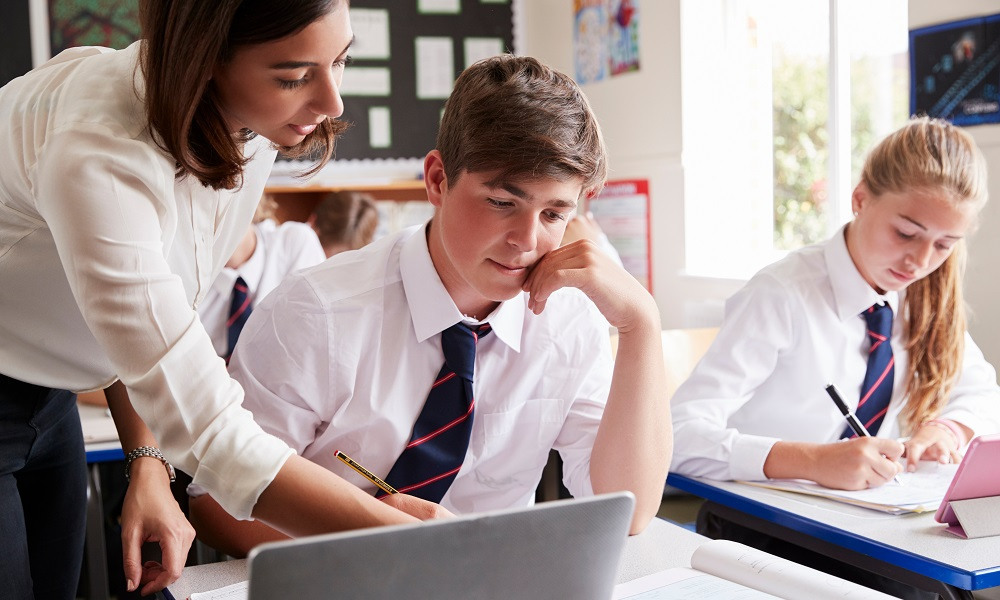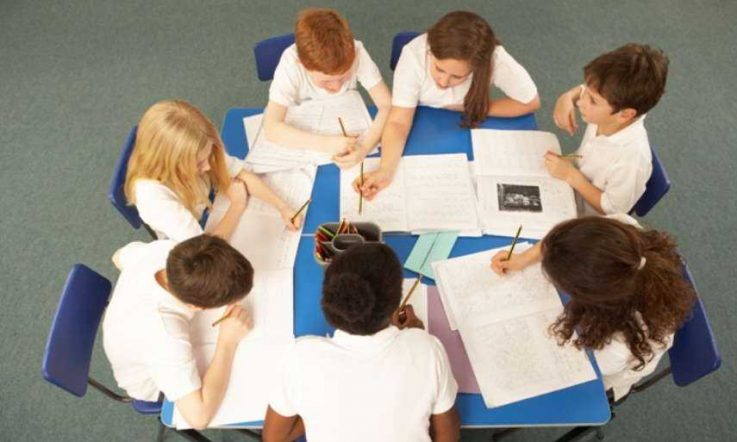What are the enablers and challenges for high school teachers using a project-based learning approach in the classroom? In today's reader submission, learning designer and educator Lisa Aitken shares findings from her research in New South Wales schools.
In my time working with New South Wales schools to support teachers in using a project-based learning (PBL) approach, I have seen many success stories – but also many tired and frustrated teachers.
Deciding that this warranted further investigation, I carried out research with 25 NSW schools and 135 teachers in the state, looking at the enablers and challenges for teachers using the PBL approach, with the aim to uncover how we can further support teachers to try using more inquiry-based pedagogy. I was seeking specific strategies that could be implemented regardless of resources, time or school environment, and would make it easier for individual teachers as well as whole schools to adopt PBL.
Why project-based learning?
With technology transforming the professional landscape at a more rapid pace than ever before, equipping students to deal with a shifting workplace is fundamental to a teacher's calling.
Not just individual jobs, but entire sectors are at risk of becoming obsolete. Casual work is on the rise and it is predicted that when our students enter the workforce it will be common to have at least five different careers in their lifetime (FYA, 2017).
At the University of Technology Sydney, 40 per cent of students have said they want the skills and ability to create their own career pathways when they graduate. This kind of work deviates from traditional roles and requires creativity, resilience and high level social emotional skills.
This is reflected in the demands industry is placing on those hoping to enter its employment.
Over the past three years the proportion of early career job advertisements requiring ‘critical thinking' has risen by 158 per cent, ‘team work' by 19 per cent and ‘creativity' by 65 per cent (FYA, 2017).
PBL is different to traditional methods of teaching in that the teacher takes on the role of facilitator and learning is a more collaborative, hands-on process driven by real-world connection. It uses authentic projects as vehicles to encourage deeper learning through collaboration and extended inquiry, and culminates in a final product or event.
PBL is an effective method to deepen learning and grow a range of skills allowing students to question, research and learn from both their successes and failures. Benefits include positive student attitudes, greater connection of concepts to the real world and higher student and teacher motivation (Boaler, 1998; Kaldi, Filippatou & Govaris, 2011; Lam, Wing-yi Cheng & Ma, 2009). In a study of 246 high school students, Mergendoller, Maxwell & Bellisimo (2006), found that standardised test results were higher when students were taught through PBL, as opposed to more traditional methods. A great literature review by Barbara Condliffe and colleagues (2016) can be found here.
Many schools in NSW are using PBL successfully and are seeing a decline in absenteeism and negative behaviour reports. This is supported by research suggesting this approach can make a positive impact upon student attendance in disadvantaged areas, which may be due to increased interest and relation of school work to the real world (Creghan & Adair-Creghan, 2015). One school I have worked with has even reported an increase in parent and family engagement with the school.
What did my research involve?
Participants in the online survey involved 135 teachers (42 men and 93 women), aged between 23 and 64 years. Participation was open to teachers from NSW public secondary schools using PBL. Participants all taught in NSW public high schools, and had between one and 40 years of teaching experience.
The High Quality PBL Framework was used to identify quality PBL. All teachers included in the study used at least three key elements of the HQ PBL framework, although they varied in how much they used it, from those who use it 100 per cent of the time drawing upon all key elements, to those using it only some of the time.
Teachers answered quantitative questions about the amount of time spent using PBL in the classroom, support received from the school, level of choice in using PBL and identified challenges in using PBL. They also completed the Teachers Sense of Self Efficacy Scale (Tschannen-Moran & Woolfolk Hoy, 2001). At the end of the survey some statements and open ended questions were included to obtain qualitative data.
Responses from four open ended questions were coded and put into themes following Tesch's Eight Steps in the Coding Process (Creswell & Creswell, 2018). Responses included ‘funding has allowed for good quality resources and the support of leadership has enabled me to undertake professional learning and ask questions of experts when needed' and ‘class size can be challenging and students stuck in their ways/preferring traditional education'.
What were the challenges?
The study uncovered that the more challenges teachers identified, the less frequently they used PBL. It also found that a teacher's self-efficacy impacted the number of perceived challenges acknowledged. This indicates that teachers with higher efficacy identified a lower number of perceived barriers when using PBL and, furthermore, those with a lower number of perceived challenges implemented PBL more often.
So, what were the challenges identified? The most frequently cited in the quantitative questions included:
- Lack of time to collaborate with colleagues;
- Lack of access to technology;
- Lack of resources;
- Students lacking maturity to fully take part in PBL; and,
- Lack of time to properly implement.
What were the enablers?
Considering the challenges teachers were facing, we then asked what the enabling factors at their school were. Ninety comments related to the theme ‘school support' (including support from principal and school leadership team), the school culture, school plan and a feeling of autonomy over the pedagogy used.
Professional development also featured highly in the teacher comments, signaling the need for robust, quality and practical professional development opportunities for teachers.
Collaboration was mentioned by a large proportion of survey participants. Comments by teachers indicated that collaborative practices such as team teaching and planning, enabled them to ‘share the workload of getting something new off the ground'. They felt that ‘shared ideas make a richer, more detailed project/program for the students', and that it brings ‘different areas of expertise together'. One teacher commented that: ‘teachers are willing to take risks within team teaching environments and are supportive of each other'. Interestingly, finding time to collaborate with colleagues was also the most frequently identified challenge in quantitative data.
Finally, several teachers indicated that resources were enabling in their PBL programs. Most comments related to access to technology, including: ‘access to laptops have made PBL more accessible' and ‘I have access to Chromebooks every lesson'.
Less common enablers included individual teacher factors such as knowledge and enthusiasm, student factors such as interest and engagement, and classroom-based supports including specific subject syllabus suitability.
Implications for school leaders, teachers and students
The survey data suggest there are several things school leaders and teachers can do to make it easier to adopt PBL in the classroom.
Prioritise time for teacher collaboration. Time to collaborate with other teachers was identified in both challenges and enabling factors, highlighting the importance of building connections between colleagues. Look at how staff meetings are used – can the content be flipped so that announcements are given through technology and meetings are used for meaningful work? How can technology support collaboration? Are there opportunities to team teach, or observe other teachers?
Build PBL into school plans and discuss at faculty meetings. Show support from the top down.
Consider how teacher efficacy can be developed through mastery of PBL. Strategies might include providing room to collaborate, creating a safe space for mistakes and feedback, and planning how the school might slowly transition to using this approach, giving teachers time to dabble and learn.
Keep in mind that PBL can be a new way of learning and thinking for students. Teachers should consider ways to prepare and scaffold learners' experience, such as making responsibilities explicit and building in student time management.
Trust in your teachers. Give them the room to create and you will see more motivation and innovative teaching.
If access to technology is an issue at your school, consider using mobile phones as a source of technology or assign roles within groups who are responsible for researching or using technology rather than requiring all students to access the technology.
Look into quality professional development. There are several providers who will support individual teachers to develop quality programs or support a whole school approach.
Think outside the box for resources. How can the local community, parents and families engage with and support learning? Approach both local and larger organisations for mentorship, resources and content ideas. You may be surprised how many people want to help.
Think about what motivates students at your school and tap into that. The motivation of students can be an enabler. You could interview students or even co-design assessments or curricula.
Have fun with designing real world-based learning. It's an opportunity for you as an educator to get creative. Showcase what you and your students have produced and learned – this will get others on board too.
This research has helped me to develop professional development that supports teachers to overcome some of the challenges in using PBL. This has also informed our Inspiring Teaching blog that shares teacher practice providing links to real world opportunities, inspiration for projects and shares how educators use innovative practice in schools.
References
Boaler, J. (1998). Open and Closed Mathematics: Student Experiences and Understandings. Journal for Research in Mathematics Education, 29(1), 41-62.
Creghan, C., & Adair-Creghan, K. (2015). The positive impact of project-based learning on attendance of an economically disadvantaged student population: A multiyear study. Interdisciplinary Journal of Problem-based Learning, 9(2). 7.
Foundation for Young Australians, (2017) The New Work Smarts: Thriving in the New Work Order. Retrieved from: https://www.fya.org.au/wp-content/uploads/2017/07/FYA_TheNewWorkSmarts_July2017.pdf.
Kaldi, S., Filippatou, D., & Govaris, C. (2011). Project-based learning in primary schools: effects on pupils' learning and attitudes. Education 3-13, 39(1), 35-47.
Lam, S., Wing-yi Cheng, R., Ma, W.Y.K. (2009). Teacher and student intrinsic motivation in project-based learning. Instructional Science: An International Journal of the Learning Sciences, 37(6), 565-578.
Mergendoller, J. R., Maxwell, N.L., & Bellisimo, Y. (2006). The effectiveness of problem based instruction: A comparative study of instructional methods and student characteristics. Interdisciplinary Journal of Problem-based Learning, 1(2), 5.
Tschannen-Moran, M. & Hoy, A.W. (2001). Teacher efficacy: Capturing an elusive construct. Teaching and Teacher Education, 17(7), 783-805.
What are the enablers and challenges for using a project-based learning approach in your classroom?
Have you done any professional development around using project-based learning in your setting? What were some of the things you learned that you’ve been able to apply? Which areas do you need more support with?



